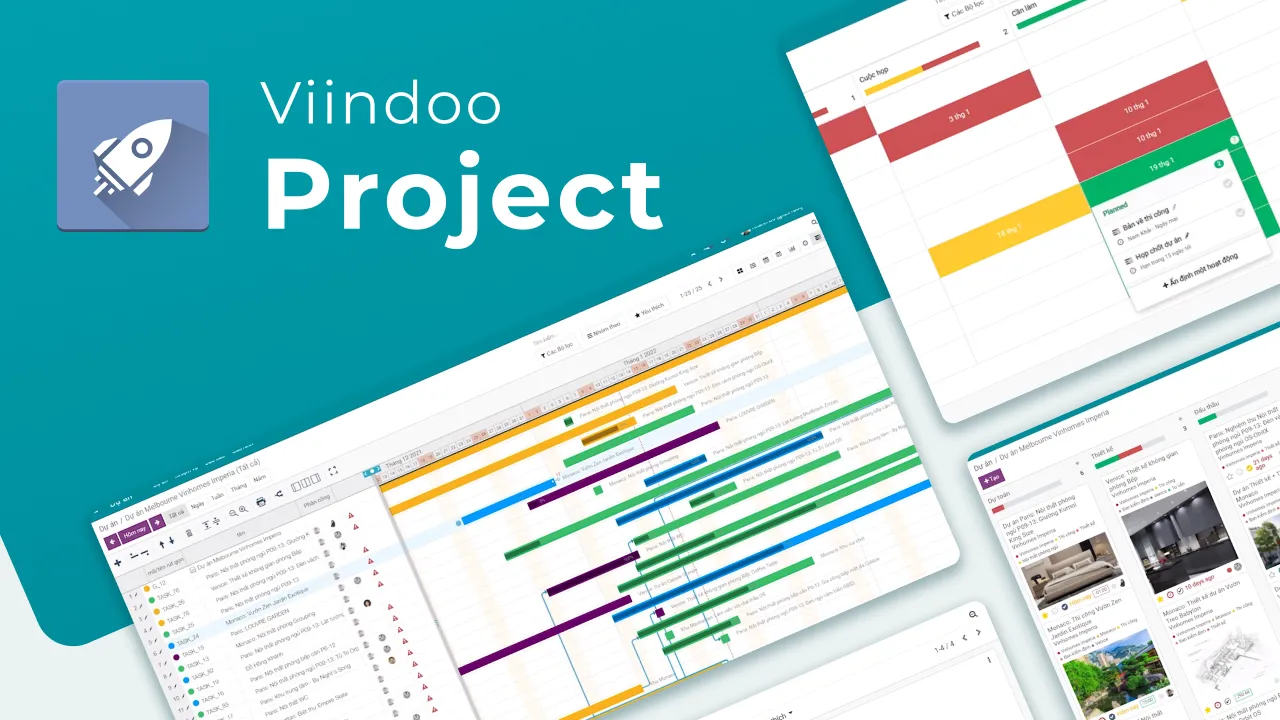
As a CEO - Are you managing tasks effectively?
Do you know your employee's work progress? Who is in charge? How's the result? Do any problems arise?
Do you waste time monitoring and reminding employees to work?
Do your employees blame others for inadequate results?
Do you have to wait forever for reports?
Viindoo Project
Optimal Project Management, Assignment and Work Progress Solution for Your Business
Keep track of the progress, manage the workflow
Flexible project management software makes project execution easier to work on.
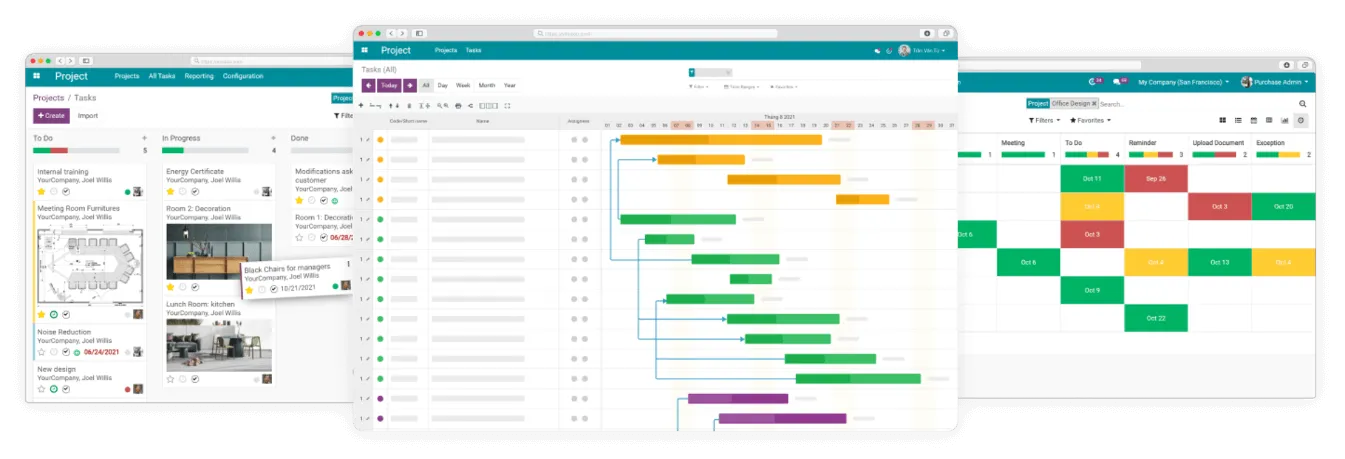
Monitor and follow up the work progress
Plan and manage tasks in order of priority.
Track the work progress of each employee with project tracker software: tasks, execution time, due date, overdue, etc.
Record actual working time instead of employee presence time thanks to the integration of logging timesheet right on the task.
Standardize the workflow
Customize & drag and drop to stage tasks on the Kanban interface.
Establish a scientific work management process. Coordinate smoothly among departments, immediately detect the problem to solve.
Automatically send updates email when the task's stage changes.
Modern interface for users
Kanban view
List view
Calendar view
Pivot table
Graph view
Activity view
Gantt chart
Collaborative work, transparent information
Divide workload and coordinate implementation among departments on the same software interface.
Communicate directly in the task: send messages, add and tag followers, attach documents, photos...
Record changes, and real-time chat history for post-audit.
Send emails, and collaborate with customers on the task interface while ensuring security.
Viindoo task management software: Create automatic actions to remind and avoid missing tasks.
Integrate ether pad - collaborate on each task in real-time.
Work online on any devices.
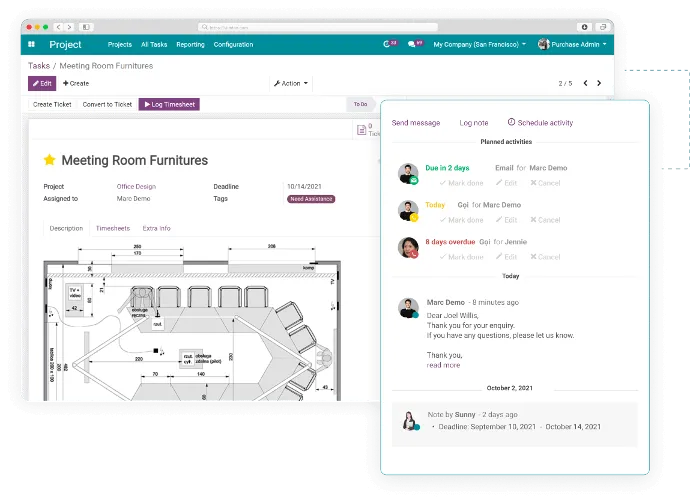
Enterprise Resources Forecasting
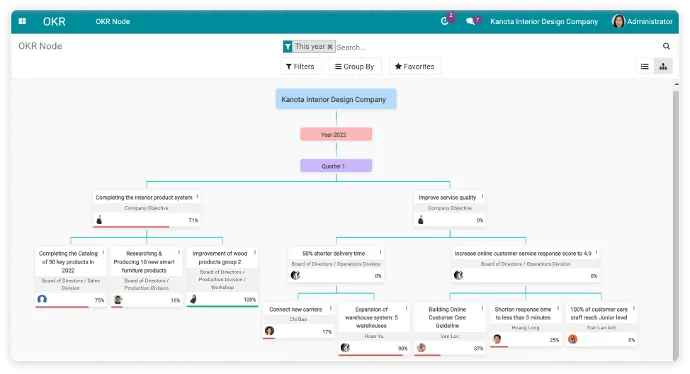
Allocate resources, assign tasks to people or departments in charge.
Prepare time forecasts and deadlines for each project.
The progress of the project is fully updated on the tracking board and links to OKR.
Compare expected and actual time to calculate profit.
Lively and instant reporting system
Visualize data, reduce the workload of managers and employees
Turn boring statistics into clear, intuitive, vivid charts and tables, updating data in real time
View reports by multi-criteria with groups and filters: employee, status, execution time, deadline, etc.
Analyze reports from overview to details:
- Project overview report: total working time of employees, record profitability of the project
- Detailed Project Cost and Revenue report
- Task analysis report with Gantt interface
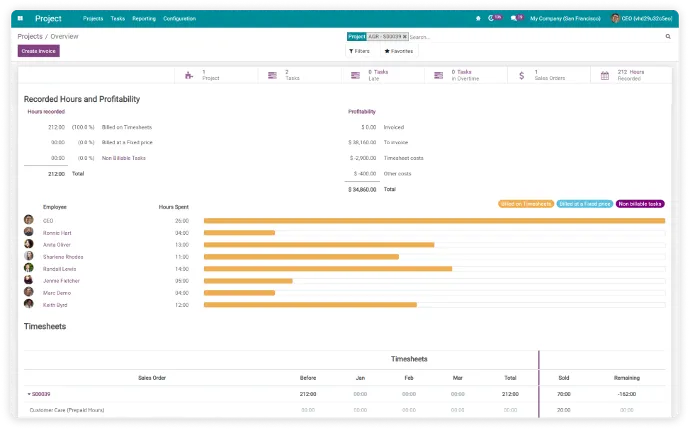
Ready to experience Viindoo Project?
